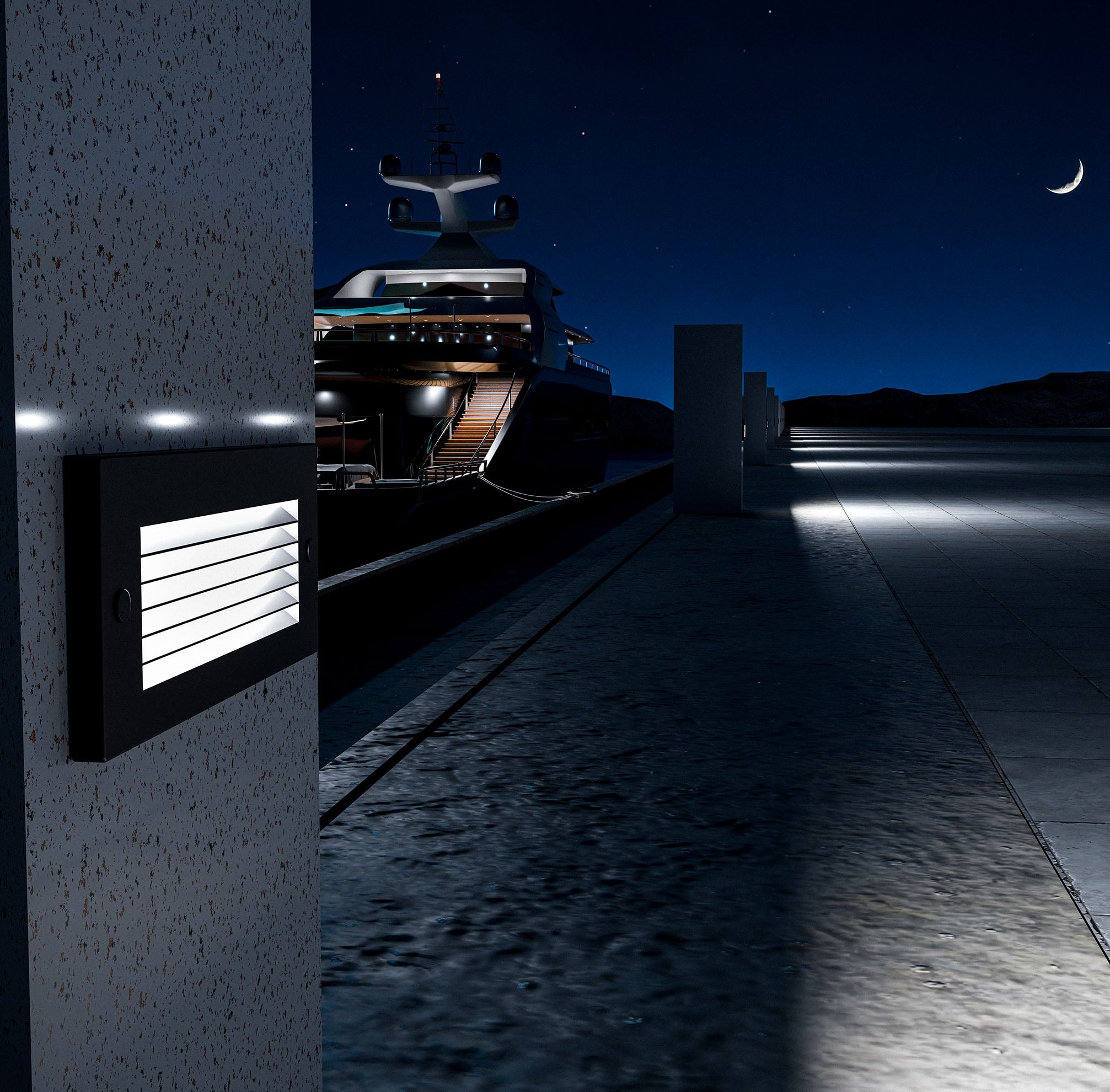Retrofitting your yacht or boat with marine LED lighting is an excellent way to upgrade your vessel, enhancing both its functionality and aesthetics. LED lights offer significant advantages over traditional lighting, including energy efficiency, longer lifespan, and improved safety. However, retrofitting is not a simple task—it requires careful planning and consideration to ensure that you achieve the best results. This blog will guide you through the essential factors to consider before starting your retrofit project, helping you avoid common pitfalls and make informed decisions.
Understanding the Benefits of LED Lighting for Marine Applications
Before diving into the retrofit process, it’s crucial to understand why LED lighting is the preferred choice for modern marine applications.
Energy Efficiency
One of the most significant benefits of LED lighting is its energy efficiency. LEDs consume significantly less power than traditional incandescent or halogen bulbs, which is particularly important on a yacht or boat where energy resources are often limited. This reduction in power consumption can extend battery life, reduce the load on your electrical system, and lower fuel consumption if you’re relying on a generator.
Longevity and Durability
LEDs have a much longer lifespan than traditional bulbs—typically lasting 25,000 to 50,000 hours. This longevity reduces the need for frequent replacements, which is especially beneficial in hard-to-reach areas of your vessel. Additionally, LEDs are more durable, capable of withstanding the vibrations, moisture, and temperature fluctuations that are common in marine environments.
Improved Lighting Quality
LED lights offer superior lighting quality, with better color rendering and brightness control. This means that the colors you see under LED lighting are more accurate, and you can adjust the brightness to suit different activities, whether it’s bright task lighting for cooking or soft ambient lighting for relaxation.
Safety Enhancements
Unlike traditional bulbs, LEDs produce very little heat, reducing the risk of fire hazards. This is a critical consideration on a boat where space is confined and materials can be flammable. Additionally, the reliability of LED lights ensures consistent illumination, which is essential for navigation and safety.
Assessing Your Current Lighting System
Before you can retrofit your boat with LED lights, you need to assess your existing lighting system to understand what you’re working with.
Inventory of Existing Lights
Start by taking a detailed inventory of all the lights currently installed on your vessel. Note the number, type, and location of each light. This will help you plan your retrofit and ensure that you replace or upgrade all necessary lights. Pay special attention to critical areas such as the cockpit, galley, cabins, and exterior deck.
Identifying Weak Points
As you inventory your lights, identify areas where your current lighting system is underperforming. Are there spots that are too dim or too bright? Are some areas not well-lit at all? Recognizing these weak points will help you determine where LED lights can make the most significant impact.
Power and Wiring Considerations
Evaluate your boat’s electrical system to determine its compatibility with LED lighting. Check the voltage of your current system (most boats use either 12V or 24V systems) and ensure that your new LED lights are compatible. Also, inspect the condition of the existing wiring. If the wiring is old or inadequate, you may need to upgrade it to safely handle the new lights. This step is crucial for preventing issues like voltage drops, which can affect the performance of LED lights.
Choosing the Right Marine LED Lights for Your Retrofit
Selecting the appropriate LED lights for your retrofit is essential to achieving the desired outcome in terms of both functionality and aesthetics.
Matching LED Types to Applications
Different areas of your boat require different types of lighting. For example, you’ll need bright, focused lighting in work areas like the galley or engine room, but softer, ambient lighting in living spaces. Choose LED lights that are specifically designed for each application. For navigation lights, ensure that the LEDs meet the required standards for visibility and color.
Considerations for Color Temperature and Brightness
The color temperature of LED lights affects the ambiance of your boat. Warm white lights (2700K-3000K) create a cozy, relaxing atmosphere, making them ideal for cabins and living areas. Cool white lights (5000K-6500K) provide bright, clear illumination, which is better suited for task-oriented areas like the cockpit or deck. Additionally, consider the brightness of the LEDs, measured in lumens. Higher lumens are needed for areas where you require strong illumination, while lower lumens are better for creating a softer, more subdued effect.
Specialty LED Lighting Options
LED technology offers a range of specialty lighting options that can enhance your boat’s functionality and aesthetics. RGB LED lights, for example, allow you to change the color of the lighting to match your mood or the occasion. Dimmable LEDs give you control over the intensity of the light, which is particularly useful for creating different atmospheres. Underwater LEDs can be installed below the waterline to create stunning visual effects around your boat, adding both beauty and safety by illuminating the area around your vessel at night.
Installation Considerations and Best Practices
Proper installation is key to ensuring that your LED retrofit is successful and that the new lights perform optimally.
Planning the Retrofit
Before starting the installation, create a detailed plan. Map out where each LED light will be installed and how it will be wired. Consider the placement of light switches and control panels, ensuring that they are conveniently located and accessible. A well-thought-out plan will help you avoid mistakes and ensure that the installation process goes smoothly.
Wiring and Power Supply Upgrades
Depending on the condition of your existing wiring and power supply, you may need to make upgrades to support the new LED lights. If your boat’s wiring is old or corroded, replace it with marine-grade wiring that can handle the current load and resist the harsh marine environment. Additionally, if you’re adding more lights or increasing the total power demand, you may need to upgrade your power supply, such as adding a higher-capacity battery or generator.
Proper Mounting Techniques
Marine LED lights must be securely mounted to withstand the vibrations and movements of the boat. Use corrosion-resistant materials like stainless steel or aluminum for mounting hardware, and ensure that all connections are waterproofed to prevent moisture ingress. When installing exterior lights, pay attention to their exposure to the elements and consider using additional protective covers or enclosures to extend their lifespan.
DIY vs. Professional Installation
While many boat owners are capable of handling a DIY installation, it’s important to recognize when professional help is needed. Complex wiring upgrades, large-scale installations, or areas where safety is a concern may require the expertise of a professional marine electrician. Hiring a professional can ensure that the installation is done correctly and in compliance with all relevant regulations.
Ensuring Compliance with Marine Lighting Regulations
When retrofitting your boat with LED lighting, it’s essential to ensure that your new lights comply with marine lighting regulations, particularly for navigation and safety lights.
Navigation and Safety Lighting Requirements
Marine regulations specify the color, placement, and visibility of navigation lights to ensure that your vessel is visible and easily identifiable to other boats. For example, red and green sidelights indicate the port and starboard sides of the boat, while a white stern light shows the rear of the vessel. Make sure that your LED lights meet these requirements and are installed in the correct locations.
Regulatory Bodies and Standards
Different countries and regions have specific regulations governing marine lighting. For instance, the U.S. Coast Guard and the International Maritime Organization (IMO) have standards that your boat must meet to be considered seaworthy. Ensure that your retrofit complies with these standards by using LED lights that are certified for marine use. If in doubt, consult with a marine professional or refer to regulatory guidelines to verify compliance.
Cost Considerations and ROI
Retrofitting your yacht or boat with LED lighting involves an upfront investment, but it’s important to consider the long-term financial benefits as well.
Initial Costs vs. Long-Term Savings
While LED lights are more expensive than traditional bulbs, they pay off in the long run through energy savings, reduced maintenance, and longer lifespan. The initial cost of the retrofit includes purchasing the LED lights, any necessary wiring or power supply upgrades, and installation costs. However, over time, the reduced energy consumption and fewer replacements can lead to significant savings.
Calculating Return on Investment (ROI)
To determine the ROI of your LED retrofit, calculate the total cost of the project and compare it to the expected savings in energy and maintenance over the lifespan of the lights. Consider factors such as how much energy you’ll save each year, how often you would have replaced traditional bulbs, and any potential increase in the value of your vessel due to the upgrade.
Budgeting Tips
If budget constraints are a concern, prioritize areas of your boat where LED lighting will have the most impact, such as navigation lights, work areas, or living spaces. You can also explore financing options or tackle the retrofit in phases, upgrading different sections of the boat over time.
Maintenance Tips for Your New LED Lighting System
Even though LED lights are low-maintenance, regular care is essential to ensure they continue to perform at their best.
Routine Inspections and Cleaning
Regularly inspect your LED lights for signs of wear, corrosion, or damage. Clean the lights with fresh water to remove salt, dirt, and other debris that can accumulate over time. Use non-abrasive cleaning materials to avoid scratching the lenses or damaging the fixtures.
Protecting Against Corrosion
The marine environment is harsh, and even corrosion-resistant materials can be affected over time. Apply protective coatings to metal surfaces, especially those exposed to saltwater. Inspect seals and gaskets regularly to ensure they remain watertight and replace them as needed to prevent water ingress.
Handling Repairs and Replacements
If an LED light fails, troubleshoot the issue by checking the wiring, connections, and power supply. In some cases, a simple fix like replacing a corroded connector or resealing a gasket can resolve the problem. If the light itself is faulty, replace it with a similar model to maintain consistency in your lighting system.
Retrofitting your yacht or boat with marine LED lighting is a smart investment that enhances the functionality, safety, and aesthetics of your vessel. By understanding the benefits of LED lighting, assessing your current system, choosing the right lights, and following best practices for installation and maintenance, you can ensure a successful retrofit. Whether you’re upgrading a small boat or a luxury yacht, the long-term benefits of energy efficiency, durability, and improved lighting quality make LED retrofitting a worthwhile project.
Ready to transform your yacht or boat with marine LED lighting? Explore K2 Lighting’s range of high-quality LED lights designed specifically for marine environments. Visit our website for product details, installation tips, and expert advice to help you plan your retrofit project. Contact us today for personalized support and to find the perfect lighting solutions for your vessel.





